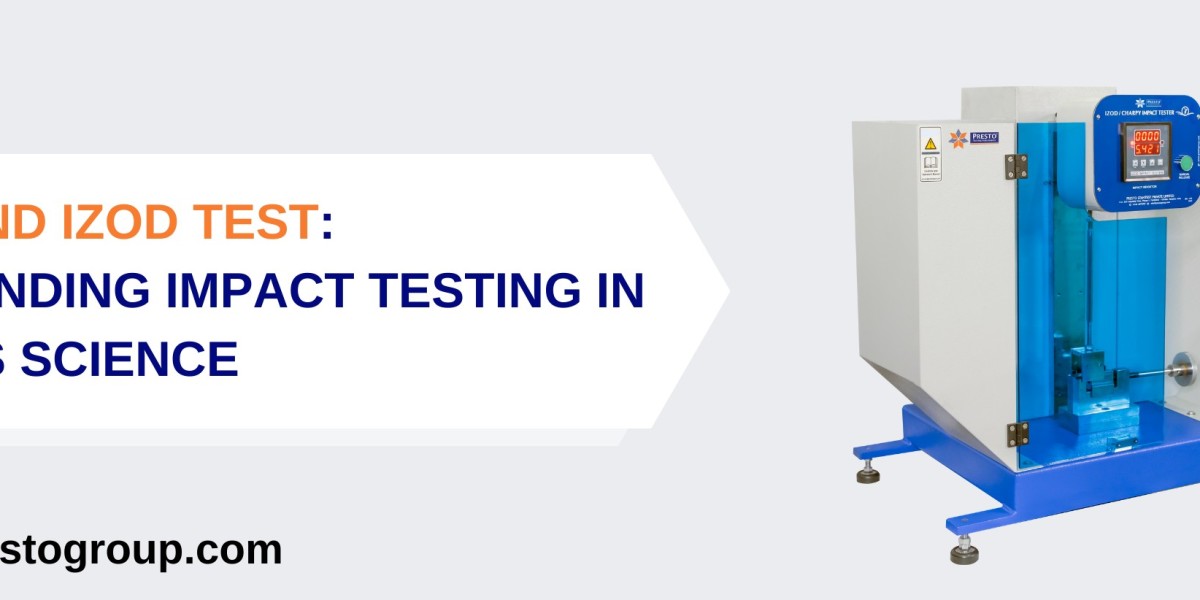Introduction Charpy and Izod Tester
Impact testing is a crucial method in materials science and engineering, used to assess a material's ability to withstand sudden loading or impact forces. Among the various impact tests, the charpy and izod test is widely employed to evaluate a material's toughness and resistance to fracture. This blog aims to provide a comprehensive overview of the Charpy and izod impact tester, their procedures, significance, and applications in modern industries.
Here know more about the difference between izod and charpy impact test The Izod and Charpy impact tests are both methods used to evaluate a material's resistance to fracture under sudden impact loading. While they share similarities, they also have key differences in their specimen configurations and testing procedures. Below are the main differences between the izod and charpy impact test:
Basics of Impact Testing: Impact testing involves subjecting a standardized specimen of a material to a sudden, high-energy impact under controlled conditions. This helps researchers and engineers understand how materials behave under dynamic loading, which is vital in scenarios where components may experience sudden shocks or collisions. You know more about the izod impact testing lab report by presto stantest.
The Charpy Test: The charpy impact test, also known as the Charpy V-notch (CVN) test, is a widely used method to assess a material's notch toughness. The test is performed on a notched specimen, typically in the shape of a rectangular bar with a V-notch at its center. The steps involved in the Charpy test are as follows:
a. Specimen Preparation: Standardized specimens are machined from the material of interest, following specific dimensions and notch geometries.
b. Pendulum Impact: The specimen is securely clamped at its two ends, and a pendulum with a striking edge is released from a specified height. The pendulum swings downward, striking the notched area of the specimen, thereby causing it to break.
c. Measurement: The energy absorbed by the specimen during fracture is recorded. This energy is known as the Charpy impact energy and is measured in joules (J).The Izod Test: The izod test is another commonly used impact test that evaluates a material's impact resistance, especially when the material's thickness is limited. The Izod test involves the following steps:
a. Specimen Preparation: Similar to the Charpy test, standardized specimens with a V-notch are machined from the material, but in this case, the notch is located at one end of the specimen.
b. Pendulum Impact: The specimen is clamped vertically, and the pendulum is released to strike the specimen at the notched end.
c. Measurement: The energy absorbed by the specimen during fracture is recorded and reported as the Izod impact energy, measured in joules (J).Significance of Charpy and Izod Tests:
Determining Material Toughness: Both tests assess a material's ability to absorb energy without fracturing catastrophically. Materials with high impact toughness can withstand sudden shocks and are commonly used in critical applications.
Quality Control: Charpy and Izod tests are crucial for quality control in industries such as construction, aerospace, automotive, and manufacturing, where materials' mechanical properties must meet strict standards and regulations.
Material Selection: The results of these tests aid engineers and researchers in choosing the most appropriate materials for specific applications, ensuring safety and reliability.
Applications of Charpy and Izod Tester :
Steel and Metal Industries: Charpy and Izod tests are extensively used to assess the impact toughness of steel and other metals, which are commonly employed in building structures, bridges, and machinery parts.
Polymers and Plastics: These tests are valuable in determining the impact resistance of polymers and plastics, which are widely used in various consumer and industrial products.
Research and Development: Charpy and Izod tests play a vital role in material research and development, aiding in the improvement of existing materials and the discovery of novel materials with exceptional impact resistance.
Conclusion Charpy and Izod tester
The Charpy and Izod tests are fundamental methods for evaluating the impact toughness of materials used in diverse industries. By understanding a material's behavior under dynamic loading, engineers and researchers can make informed decisions when selecting materials for critical applications, ensuring safety, reliability, and performance. These tests continue to be essential tools in the advancement of materials science and the design of innovative products that can withstand the challenges of the real world.








